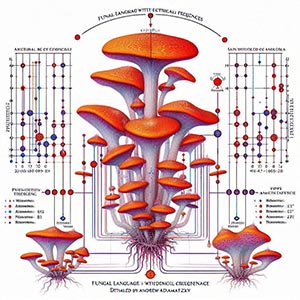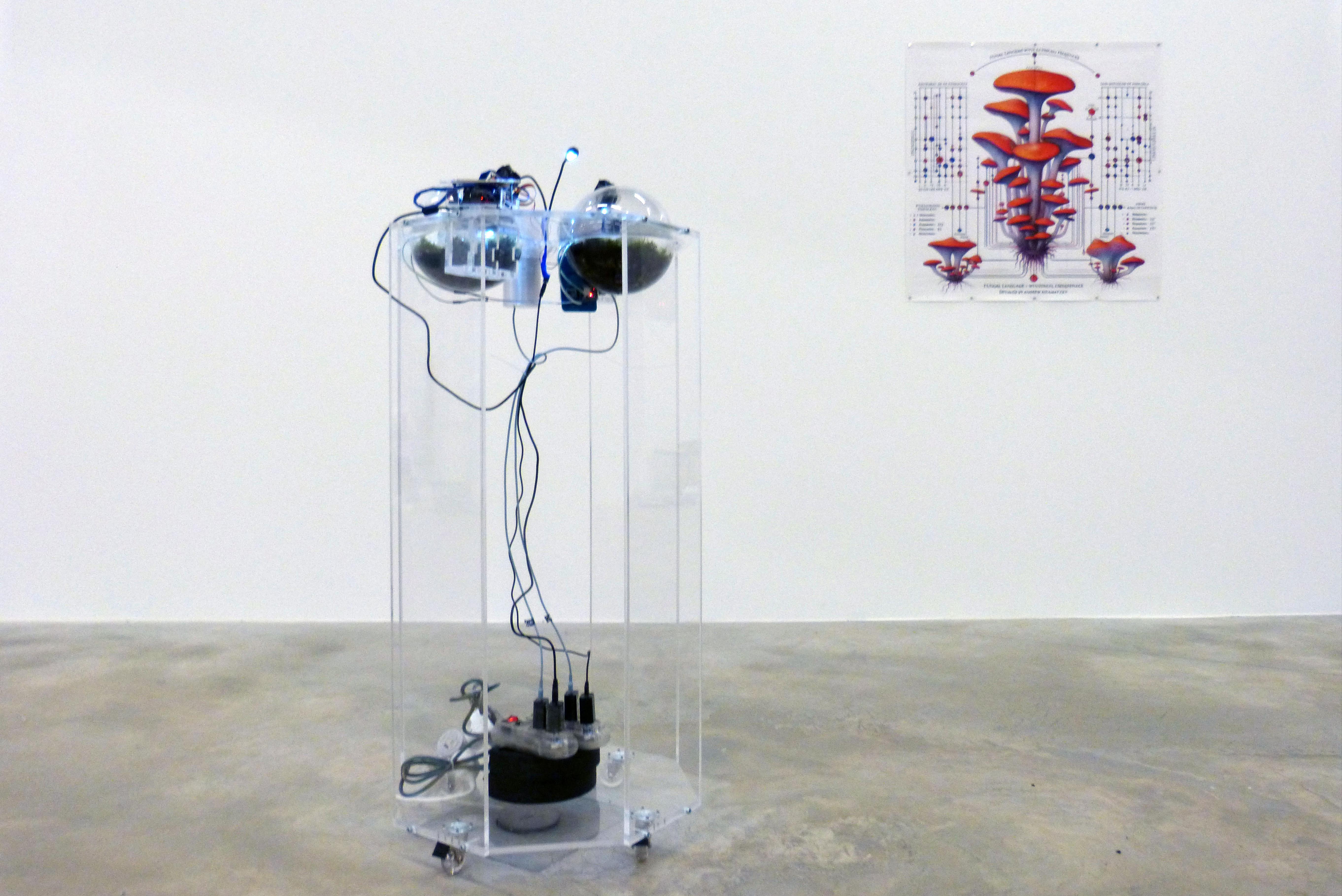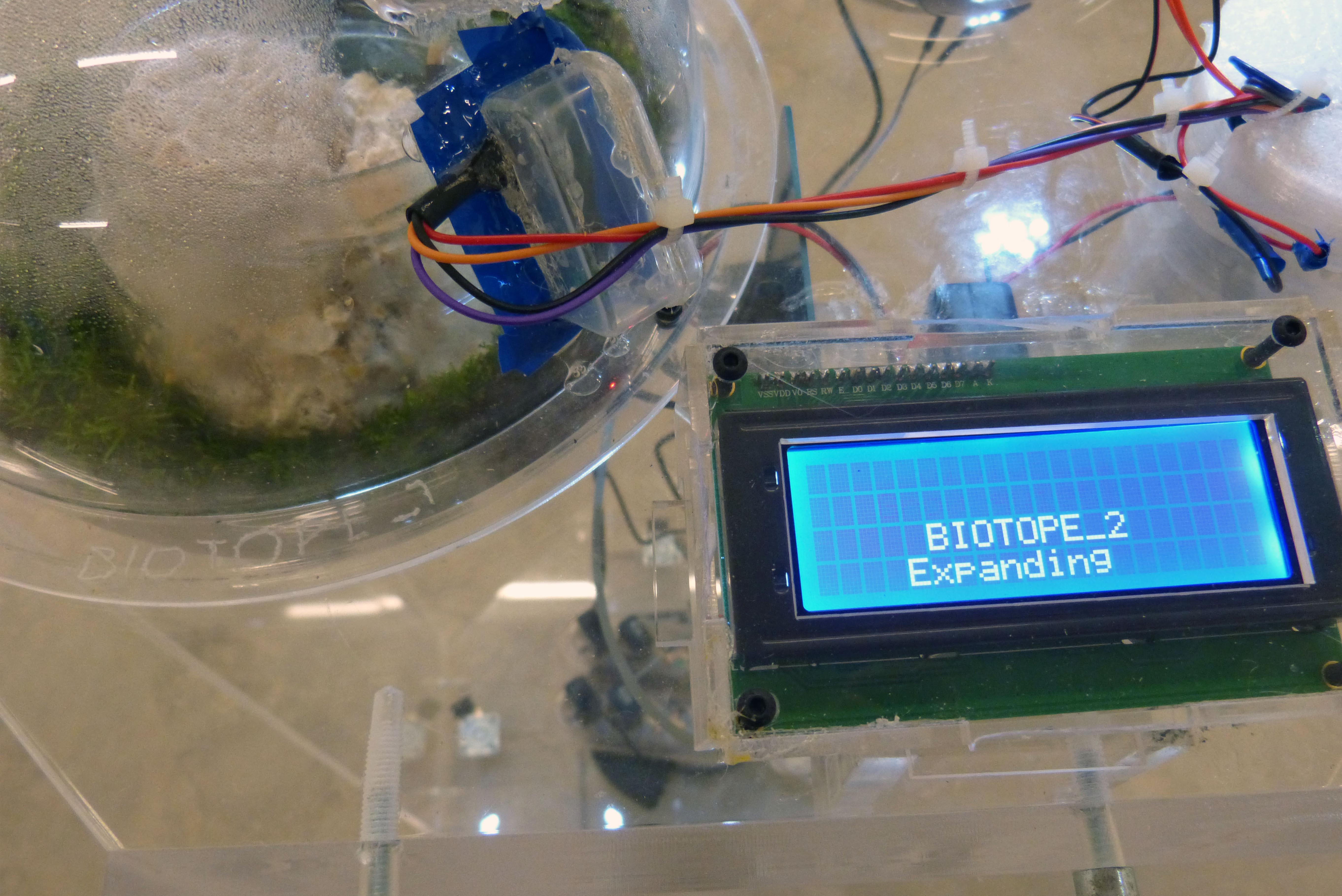FUNGICAL LANGUAGE
INSTALLATION 2024
Primavera Primavera, MECA, Bordeaux (France) 2024
Fungical Language speculates on a biotope in which organics and technology form a system. The work encourages us to take account of environmental disturbances: the presence of visitors, heat and light.
Influenced by Urbonas Studio's Mushroom Power Plat (2019)1 or Marti Howse's Radio Mycelium (2021)2. My piece features a fungus ( Omphalotus Nidformis ) connected to electrodes which are in turn connected to hardware. Inspired by Andrew Adamatzky's article “Language of fungi derived from their electrical spiking activity” (2022), this combination allows words or phrases to appear on a screen. 3
In short, the installation proposes a way of looking at things in which the electrical vibrations of mushrooms can be translated into human semiotics. The program will display matching sentences.

Poster. ©ARMET
In a society where we are beginning to understand the benefits and risks of artificial intelligence, we need more than ever to look at “plant neurobiology”. Stefano Mancuso raises the question that plants are an excellent way of thinking about our technological future.

code using. Reproduced with permission. ©ARMET
The piece does not feature plants as such. Mycelium has the particularity of reinterrogating our modes of relationship and our perception of what the Internet is. If we don't believe that organisms are mere ornaments, their dismountable construction is a typical example of modernity: of a collaborative architecture distributed in different ways with a strong resistance to problems. We've just realized that the use of artificial intelligence has an impact on the ecosystem: the presence of carbon, which implies warming. And if we use mycelium in conjunction with artificial intelligence, could there be a more virtuous system? For my installation, I also drew inspiration from Alexander Von Humboldt's Essai sur la géographie des plantes (1805).4. Computer graphics or data visualization, formerly known as complex data mapping, will be seen alongside mycorrhizal communication. The map created by machine learning is a singular proposal of what a map is with the help of artificial intelligence. It's an investigation into how we should present biological data and show the link between mycelium, energy and the ecology of organisms.
- https://www.youtube.com/watch?v=rTNQcZGLZ7g&t=2s
- https://www.youtube.com/watch?v=LDip3I1b3HA&t=1s
- Adamatzky A. Language of fungi derived from their electrical spiking activity. R Soc Open Sci. 2022 Apr 6;9(4):211926. doi: 10.1098/rsos.211926. PMID: 35425630; PMCID: PMC8984380.
- https://bibdigital.rjb.csic.es/idurl/1/14394




